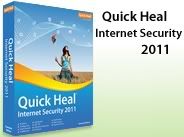Microsoft's new approach to Internet via Bing.com
The result of this new approach is an important beginning for a new and more powerful kind of search service, which Microsoft is calling a Decision Engine, designed to empower people to gain insight and knowledge from the Web, moving more quickly to important decisions. The new service, located at http://www.Bing.com, will begin to roll out over the coming days and will be fully deployed worldwide on Wednesday, June 3.

Microsoft identified three design goals to guide the development of Bing: deliver great results; deliver a more organized experience; and simplify tasks and provide insight, leading to faster, more confident decisions. The new service, built to go beyond today’s search experience, includes deep innovation on core search areas including entity extraction and expansion, query intent recognition and document summarization technology as well as a new user experience model that dynamically adapts to the type of query to provide relevant and intuitive decision-making tools.
The new brand portfolio will include the following changes to existing Microsoft programs:
- Microsoft’s mapping platform, Virtual Earth, will now be branded as Bing Maps for Enterprise. More information can be found here.
- Technology from Microsoft’s April 2008 acquisition of Farecast is now a central part of Bing Travel. More information coming soon.
- Microsoft’s popular cashback program, now dubbed Bing cashback, with more than 850 merchants and more than 17 million products available, will be fully integrated into the Bing Shopping experience.
Microsoft is now with "Visual Studio 2010 and .NET Framework 4 Beta 1"
Democratizing Application Lifecycle Management
Application Lifecycle Management (ALM) crosses many roles in a development organization. Traditionally, not every role has had an equal part in the process. Visual Studio Team System 2010 continues to empower an organization to build a platform for functional equality and shared commitment across its ALM process.
Enabling emerging trends
Every year the industry develops new technologies and new trends. With Visual Studio 2010, Microsoft delivers tooling and framework support for the latest innovations in application architecture, development, and deployment.
Inspiring developer delight
Ever since the first release of Visual Studio, Microsoft has set the bar for developer productivity and flexibility. Visual Studio 2010 continues the tradition by significantly improving the experience for all software development roles.
Riding the next generation platform wave
Microsoft continues to invest in the market-leading operating system, productivity applications, and server platforms to deliver increasing customer value. With Visual Studio 2010, customers will have the tooling support that is required to create amazing solutions around these technologies.
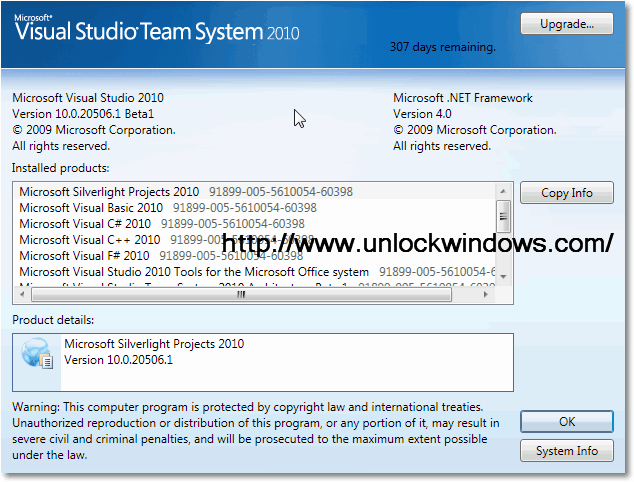
Visual Studio 2010 Professional Beta 1
Visual Studio Team Foundation Server 2010 Beta 1
Visual Studio Team System 2010 Team Suite Beta 1
.NET Framework 4 Beta 1
Home Page | Official Site
Microsoft F#, May 2009 Community Technology Preview
F# is a functional programming language for the .NET Framework. It combines the succinct, expressive and compositional style of functional programming with the runtime, libraries, interoperability, and object model of .NET. It is well suited to a spectrum of development tasks - from interactive, explorative scripting to component and large-scale software development. The CTP release of F# provides further support for explorative development using F#, as well as improved Visual Studio integration to enable large-scale, tool-based software development.
The F# CTP is available as either an MSI or a ZIP. Windows users should install the MSI, which will install all the tools and the Visual Studio 2008 integration if Visual Studio is present on the machine. Non-Windows users can save and unpack the ZIP and read the instructions in README-fsharp.html.
Fsharp.zip | InstallFSharp.msi
Source: Microsoft
Microsoft Press 25th Anniversary "Free E-Book of the Month" Offers
Celebrating 25 years
Microsoft is Serving its users with the latest technology, increasing your skills, keeping your knowledge above the level of extent by Microsoft Press' Ebooks from last 25 years. Microsoft is providing a way to get many of those at free of cost simply by signing up for the Microsoft Press Book Connection Newsletter for notification of offers, register, and download the selection of the month. Offer is limited so hurry.
These offers expire on May 27, 2009, so download the e-books today
Offer Includes:
Windows Server 2008 Terminal Services Resource Kit, by Christa Anderson and Kristin L. Griffin with the Microsoft Presentation Hosted Desktop Virtualization Team.
In-depth and comprehensive, this Resource Kit delivers the information you need to set up, deploy, and manage a Terminal Services farm using Windows Server 2008.
The Practical Guide to Defect Prevention, by Marc McDonald, Robert Musson, and Ross Smith.
This practical, hands-on guide captures, categorizes, and builds a process of best practices to help avoid creating defects during the development process—rather than fixing them after extensive analysis.
Note: You will need to temporarily allow pop-ups in order to download the free e-book offer.
Source: Microsoft Press
End to End Trust launches new website

To this end, Microsoft recently launched a new End to End Trust Web site. The site includes a video wall that features CEOs, Chief Information Security officers, founders of computer security alliances, and other influencers. Watch these videos to learn more about End to End Trust. Want to participate? Visit the community page.
Microsoft released an update for Windows 7 as KB 970789
For example, if a folder is created under the root of the system drive from an elevated command prompt, this folder will not correctly inherit permissions from the root of the drive. Therefore, some specific operations, such as deleting the folder, will fail when they are performed from a non-elevated command prompt. Additionally, the following error message appears when the operation fails:
Access is denied.
Furthermore, the missing security descriptor entries protect non-admin file operations directly under the root.
Cause: This problem occurs because the English version of Windows 7 Release Candidate 32-bit Ultimate incorrectly sets access control lists (ACLs) on the root.
Resolution: For those customers who are affected by this problem, the fix is available through Windows Update or visit Microsoft Help and Support
What's New in Windows 7 Release Candidate
Download the video
Windows® Automated Installation Kit (AIK) for Windows® 7 RC available
Download WAIK.
Download WAIK documentation.
Windows 7 RC on the floor. Grab your Copy !!!
Last week Microsoft released the Windows Se7en RC for MSDN and Tech net subscriber’s and today it goes public. Build 7100 is made official Release Candidate Version of Windows 7. Both 32 and 64 bit versions are available for download in five languages as English, German, Japanese, French, and Spanish.
The RC will be available at least through July, and its download will not be closed on the criteria of number of downloads or product keys. So we have plenty of time.
Note: The Beta expires on August 1, 2009, and bi-hourly shutdowns will begin July 1, 2009. The RC will expire June 1, 2010, and the bi-hourly shutdowns will begin on March 1, 2010
What’s new in Windows 7 RC
In addition to improvements in operating speed, navigation, taskbar, and security, Windows 7 RC has a number of brand-new features we think your customers will be pleased with:
Windows XP Mode enables Windows 7 Professional users to seamlessly run many Windows XP applications in Windows 7. The Windows XP Mode feature is designed to help small businesses that are still using older Windows XP applications to move painlessly to Windows 7. Note: Windows XP Mode is a special download in addition to the RC. Install Windows XP Mode Beta.
Remote Media Streaming enables users to access home-based digital media libraries over the Internet from another Windows 7 PC outside the home in a security-enhanced manner.
Download
Windows 7 RC x86 (32bit) | Windows 7 RC x64 (64bit)
Copy of Windows 7 can be registered and your own Windows 7 RC product key can be get directly from [HERE].
Windows 7 RC release dates announced

Users having a TechNet Plus subscription can download the Windows 7 RC right now from Technet subscriber site. The rest of us have a few more days to wait - until 5 May. Bookmark the Windows TechCentre so you see the notification as soon as it is available! In the meantime why not review some of the Windows 7 resources?
So guys push your limits and taste this new versio of Windows Se7en.
Step into the future... without letting go of the past with "Install Windows Virtual PC on Windows 7"
Windows® Virtual PC Beta, a feature of Windows 7 Professional, Windows 7 Ultimate, Windows 7 Enterprise, provides you the capability to run multiple Windows environments such as Windows XP Mode from Windows 7 desktop. Windows® Virtual PC is a new optional component that you can use to evaluate and migrate to the Windows® 7 operating system while maintaining compatibility with applications that run on older versions of Windows. This component is available as a downloadable update package for Windows 7.
Key features
Microsoft has added several new features to Windows Virtual PC to make it easy to use and to help you run many older Windows XP applications in Windows 7.
- Easy setup of Window XP Mode
- One click launch of Windows XP Mode applications
- USB support
To install Windows Virtual PC, you download and install the update. Before you try to install Windows Virtual PC, review the requirements to determine whether your computer can run Windows Virtual PC. Windows Virtual PC requires the release candidate of Windows 7 and hardware-assisted virtualization. Steps to follow are:
1.Install the update package:
- a.Double-click the file, Windows6.1-KB958559-plaftform.msu, where platform is either x86 or x64.
b.Review the end-user license agreement and accept it to install the update.
c.To complete the installation, restart the computer.
After you install Windows Virtual PC, you need to set up a virtual machine. You can either use the Virtual Windows XP feature, or create your own virtual machine. If you plan to use Windows XP, you should download and use the Virtual Windows XP update package.
To set up Windows XP mode
1.Double-click VirtualWindowsXP.msi
2.The Virtual Windows XP wizard opens. Proceed through the pages of the wizard to complete the installation. To complete the setup without interruption, leave the option checked to let the wizard start Virtual Windows XP when setup is complete.
3.When the virtual machine starts for the first time, the Virtual Windows XP license agreement appears. To use Virtual Windows XP, you must accept the license agreement. Click Next to continue.
4.Create a password for the “User” account. This is a required account with administrator privileges that the wizard creates automatically. It is the default account used to run Windows XP mode. If you don’t want to enter the password each time you start Windows XP mode, check Remember credentials to store the password. Otherwise, write down the password and store it in a secure location.
5.Choose whether to configure Virtual Windows XP for automatic updates. Click Next.
6.After Windows Virtual PC configures Virtual Windows XP, the virtual machine is ready to use to test the scenarios.
Windows Virtual PC Beta will be available for download on May 5th. Learn more about Windows Virtual PC Beta.
[Windows Se7en Bug] Cut 'n' Paste bug.
Steps to produce the bug:
1.Open any folder containing some files.
2.Cut any file from the folder.
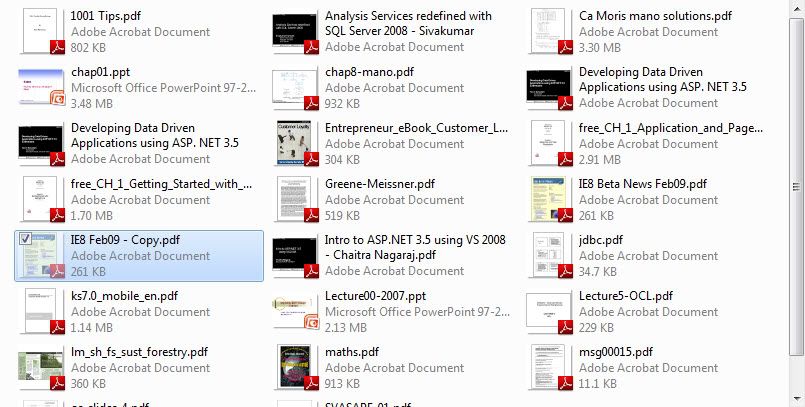
3.Delete any other file which is present before the file which is cut or paste any file which will come before that file according to sorting order.
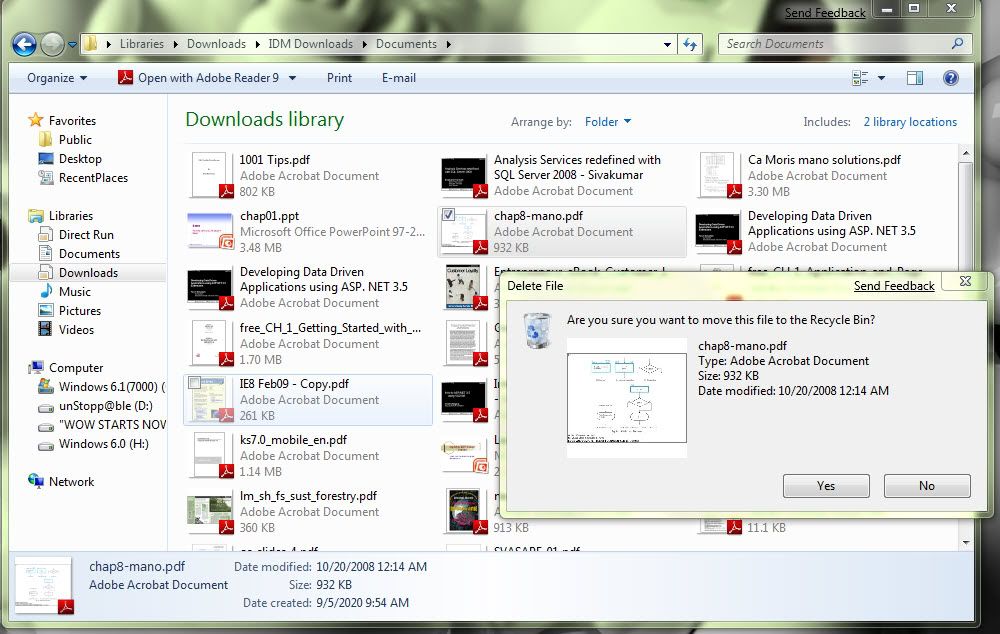
4.As soon as the any file present before the file which was cut the next file gets grayed showing as it has been cut. Means if we go on deleting files before file which was cut then system increases the index of file cut to that much number of files. It will be vice-versa if we paste any file before the file which was cut.
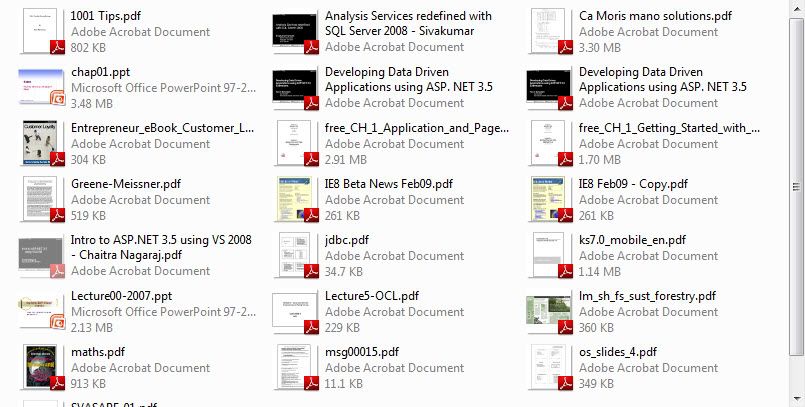
5.Now as the file which was cut is not grayed so if we delete that file which was initially cut and try to paste it in the same folder then there is no problem and no prompt of file missing but if we try to paste it in another location then system will prompt that file is missing.
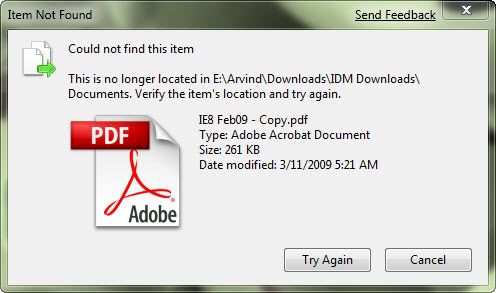
Unlock Windows
Search
Subscribe
Translator
Popular Posts
Blog Archive
- March 2011 (3)
- February 2011 (2)
- January 2011 (4)
- December 2010 (13)
- November 2010 (7)
- October 2010 (7)
- September 2010 (1)
- August 2010 (2)
- July 2010 (3)
- June 2010 (8)
- May 2010 (18)
- April 2010 (12)
- March 2010 (15)
- February 2010 (9)
- January 2010 (15)
- December 2009 (21)
- November 2009 (28)
- October 2009 (35)
- September 2009 (14)
- August 2009 (23)
- July 2009 (19)
- June 2009 (20)
- May 2009 (12)
- April 2009 (18)
- March 2009 (8)
- February 2009 (7)
- January 2009 (14)
- December 2008 (16)
Labels
- Anti Virus
- Apple
- Beta Products
- Bing
- Bugs
- Creativity
- Download Center
- Ebooks
- Events
- Expression
- Games
- Internet Explorer
- Keyboard Shortcuts
- Microsoft Hardware
- Microsoft Office
- Microsoft Research
- News
- Offers
- Review
- Security
- Silverlight
- Software
- SQL Server
- Themes
- Tips 'n' Tricks
- Unsorted
- Visual Studio
- Wallpapers
- Windows 7
- Windows 8
- Windows Live
- Windows Mobile
- Windows Phone
- Windows Server
- Windows Vista
- Windows XP
- Zune
Friends
About Me
- Arvind Kumar
- I'm Arvind Kumar from India, B.Tech, now working in a MNC. I love to use Microsoft Products and learn from that. Bill Gates is my ideal person.
